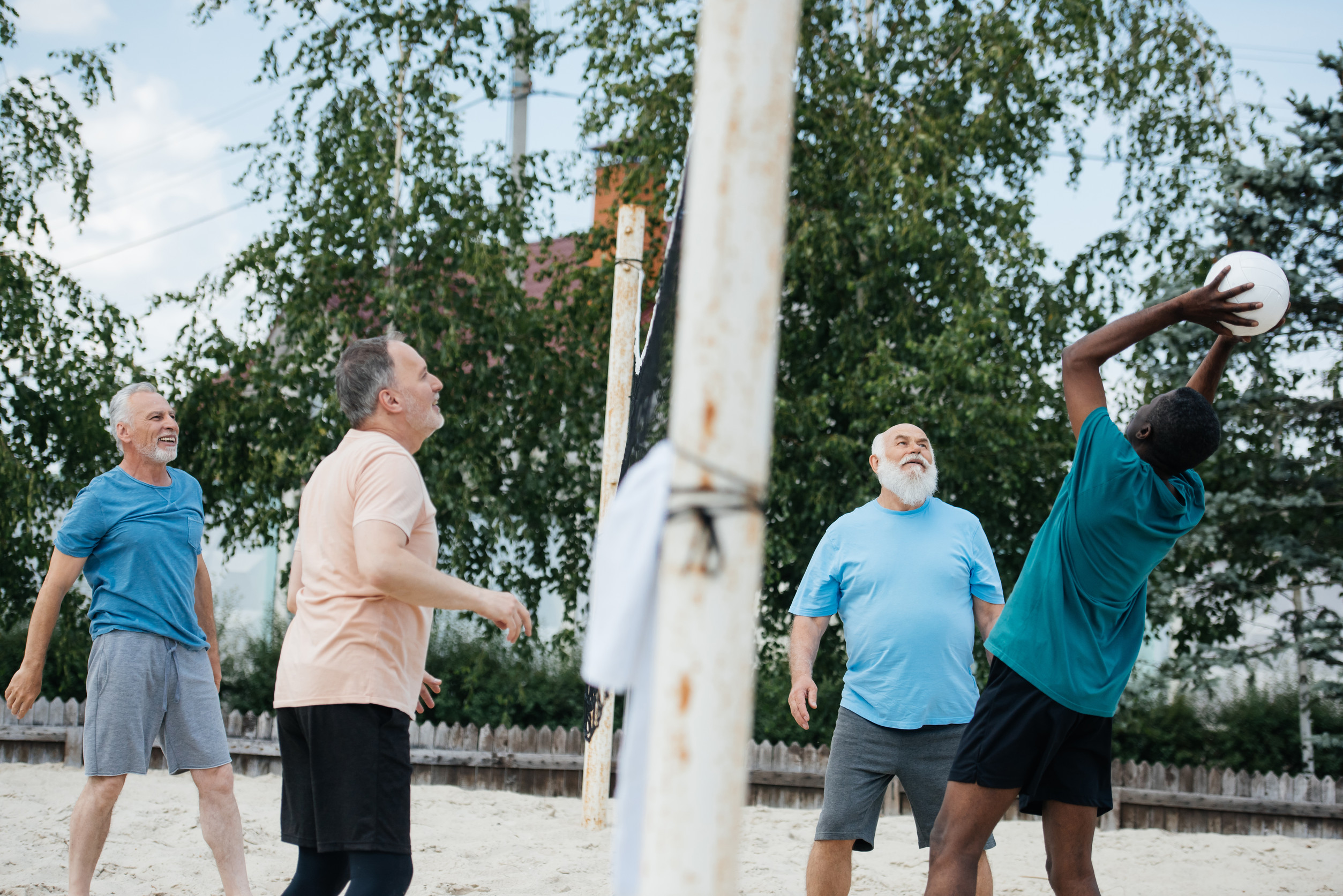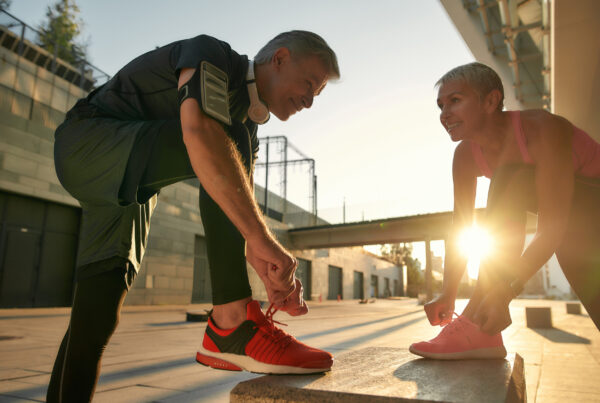”Question: How can exercise help Veterans prevent and manage diabetes?
Reading time: 5 Minutes
MWi Hack:
- Veterans have double the diabetes rate of civilians, but the same military discipline, teamwork, and structured fitness mindset that defined their service can become their greatest weapon in preventing and managing the disease through proven VA exercise programs that deliver real results.
MWi Summary:
- Higher diabetes rates among Veterans: Recent studies show nearly 1 in 4 Veterans have type 2 diabetes—substantially higher than the 11.3% rate in the general U.S. population (2021-2023 data)—with the most recent comprehensive Veteran study from 2013-2014 showing 20.5% affected, though current rates are likely higher.
- Veterans start with fitness advantages: Veterans engage in more physical activity than civilian peers due to military fitness requirements and tend to continue those habits, providing a strong foundation for diabetes prevention—with 150 minutes of weekly moderate exercise proven to prevent or delay diabetes in those with prediabetes.
- VA programs deliver proven results: Veterans in VA MOVE! achieved significant weight loss, Gerofit participants saw 55% reduce medications for multiple conditions after one year, and online Diabetes Prevention Programs helped Veterans lose an average of 10.6 pounds at six months—all by leveraging community support, accountability, and structured goals that mirror military culture.
- Military-specific risk factors require tailored solutions: Deployment stress, limited food choices (especially on Navy ships), frequent relocations disrupting healthcare, and socioeconomic factors create unique diabetes challenges—with Veterans having less than 12 years of education showing 33.5% diabetes rates in 2013-2014 data.
- Family support gaps need addressing: MWi survey data shows military families want more diabetes resources designed for the entire family unit, yet while 9.2 million Veterans were enrolled in VA healthcare (2021), only 6.8 million received care—revealing awareness gaps and trust issues that prevent families from accessing proven diabetes prevention and management programs.
-
The military and Veteran community faces a significant diabetes challenge. Recent studies indicate that nearly 1 in 4 Veterans have type 2 diabetes—substantially higher than the general U.S. population, where the most current data (August 2021-August 2023) shows 11.3% of adults have diagnosed diabetes. The most comprehensive population-based study of Veterans, using 2013-2014 data, found 20.5% affected, though this data is now over a decade old and prevalence has likely increased. Among Veterans actively using VA healthcare, the rate reaches approximately 25%. But here’s the encouraging news: the same discipline, teamwork, and mission-focused mindset that defined military service can become powerful tools in preventing and managing diabetes.
Building on a Foundation of Fitness
Veterans already possess a crucial advantage in the fight against diabetes—a history of physical fitness and structured exercise. Research shows that Veterans engage in slightly more physical activity than their civilian peers, likely due to the fitness requirements during military service and the tendency to continue those activity habits afterward. This foundation provides an excellent starting point for diabetes prevention and management.
The key is translating military fitness into sustainable civilian exercise routines. While service members benefit from regimented physical training schedules, the transition to civilian life often disrupts these patterns. However, this isn’t a weakness—it’s an opportunity. Veterans understand the value of structure, accountability, and setting measurable goals. By applying these same principles to civilian fitness routines, Veterans can maintain the 150 minutes of moderate physical activity weekly that research shows can prevent or delay diabetes in those with prediabetes.
Proven Programs Deliver Real Results
The VA has developed evidence-based programs specifically designed to help Veterans manage weight and prevent diabetes, and the results speak for themselves. Veterans participating in the VA MOVE! program have achieved significant weight loss through improved diet and physical activity. The Gerofit program shows even more impressive outcomes—after just one year, 55% of participants decreased their overall medication needs for multiple conditions, including diabetes.
Online Diabetes Prevention Programs have proven particularly effective for the modern Veteran community. Participants lost an average of 10.6 pounds at six months and maintained an 8.08-pound weight loss at one year. These programs work because they incorporate elements military families understand: community support, accountability through group participation, one-on-one coaching feedback, and clear educational goals around healthy eating and exercise.
The Power of Community Connection
What makes these programs truly effective isn’t just the exercise plans or nutritional guidance—it’s the community. Veterans consistently report that connecting with peers who share similar experiences creates a support network that drives success. This mirrors the unit cohesion that military members rely on during service. When Veterans exercise together, share meal planning strategies, or simply check in on each other’s progress, they’re applying the same mutual support that helped them succeed in uniform.
MWi survey data reveals that military families specifically want more resources designed to support the entire family unit in managing diabetes. This makes perfect sense—military families have always operated as teams, supporting each other through deployments, relocations, and transitions. Extending that team approach to health management creates powerful opportunities for collective success.
Understanding Unique Challenges, Building Tailored Solutions
The military community faces specific diabetes risk factors that civilian populations don’t encounter. Multiple deployments create stress that impacts metabolism. Limited food choices in deployed environments—particularly on Navy ships and submarines—contributed to increased diabetes rates between 2018 and 2021. Frequent relocations disrupt healthcare continuity and established exercise routines. According to 2013-2014 data, Veterans with less than 12 years of education faced particularly high diabetes rates at 33.5%, highlighting how socioeconomic factors compound health risks.
But recognizing these challenges isn’t about dwelling on obstacles—it’s about developing targeted solutions. Military families excel at adapting to difficult circumstances and supporting each other through challenges. By acknowledging the specific barriers this community faces, programs can be designed that work with military lifestyles rather than against them.
Moving Forward Together
While over 9.2 million Veterans were enrolled in the Veterans Health Administration as of 2021, only about 6.8 million received VA care. This gap represents millions of opportunities to connect Veterans with proven diabetes prevention and management resources. The programs exist, they work, and they’re available—now it’s about raising awareness and building trust in these services.
The military community has never shied away from difficult missions. With discipline, mutual support, and proven programs, preventing and managing diabetes becomes not just possible, but achievable. By leveraging the strengths that define military service—structure, accountability, teamwork, and determination—Veterans and military families can write the next chapter as one of improved health and wellness.






